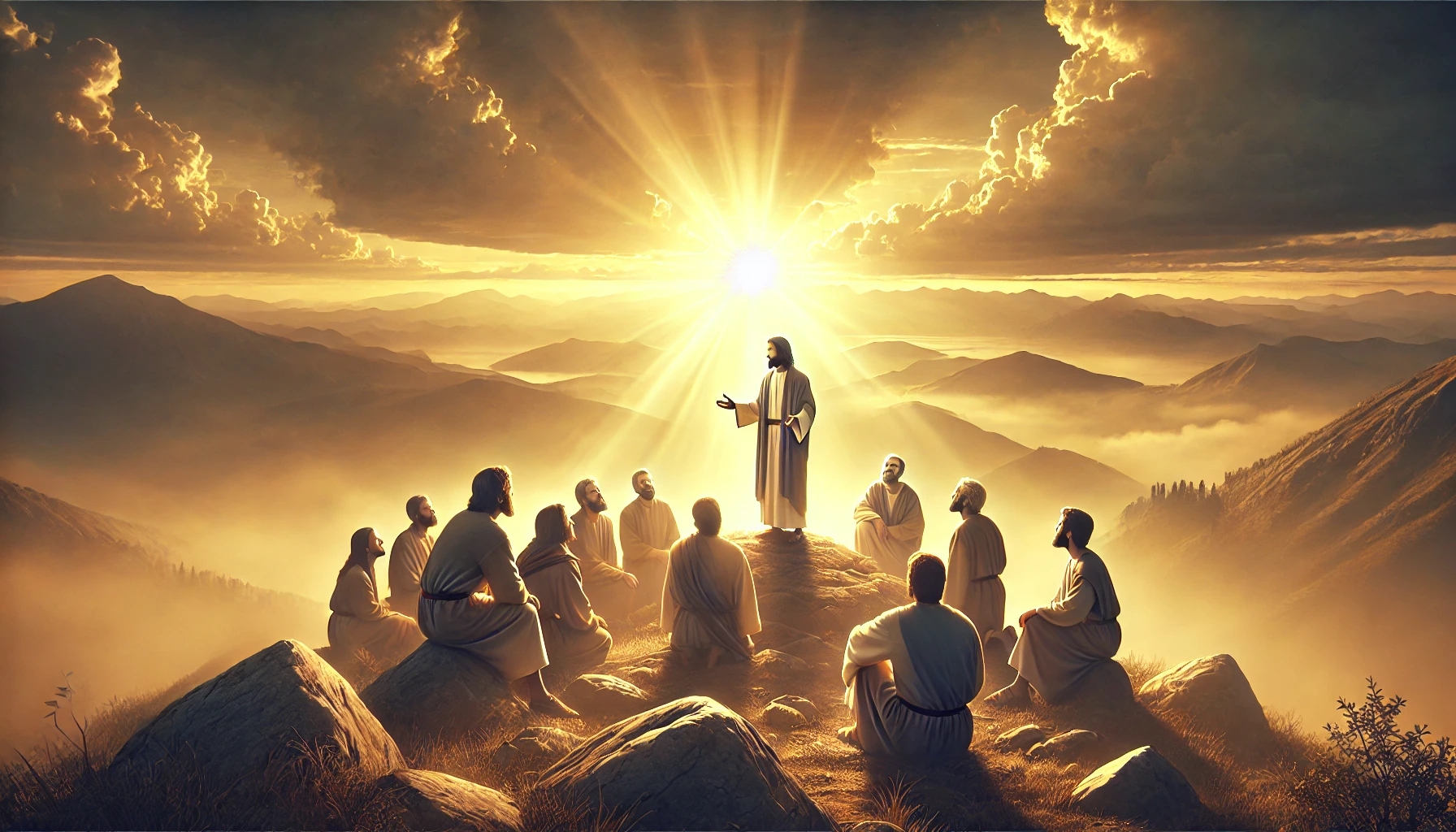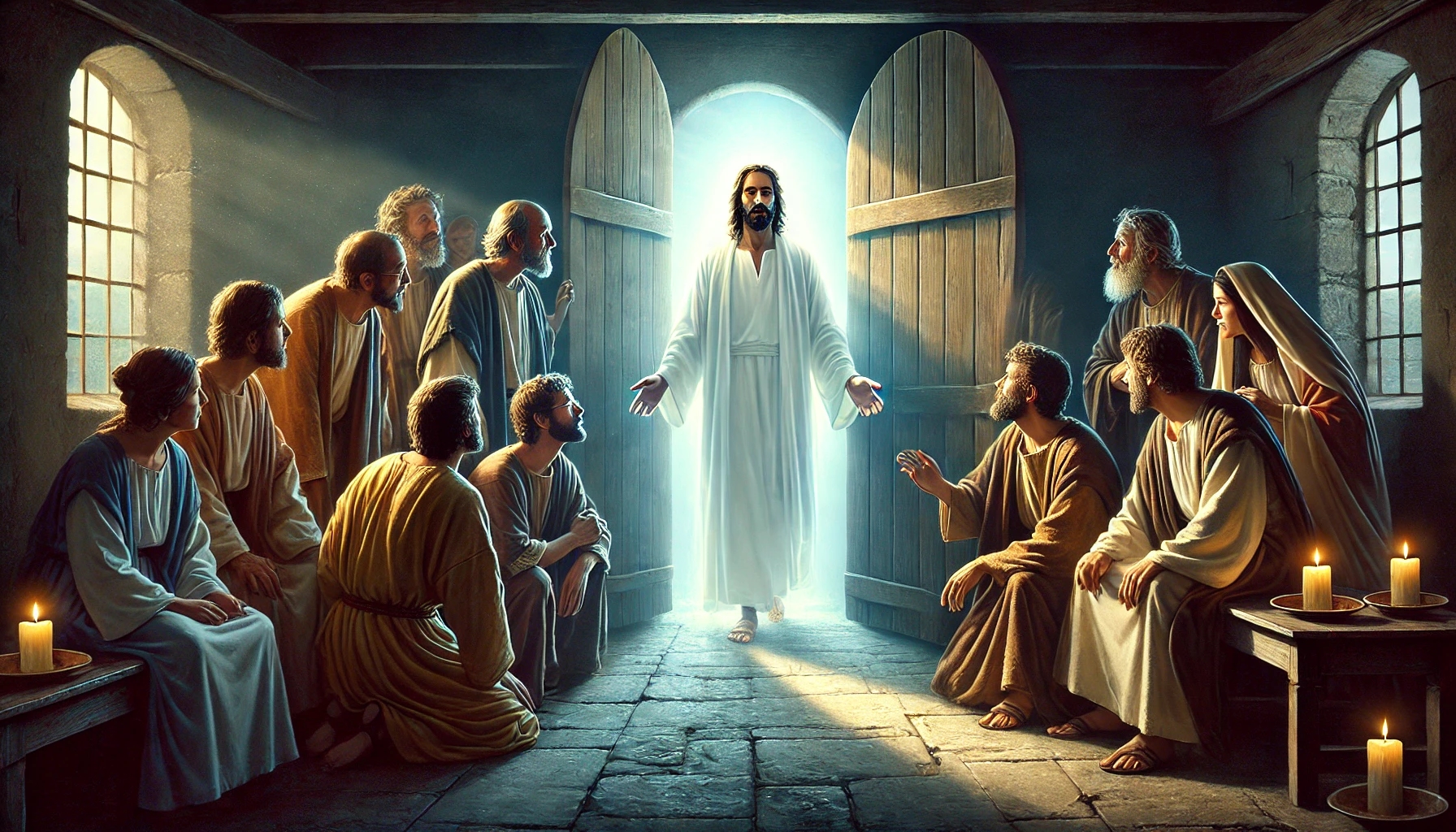January 5, 2024
DAILY BIBLE READING – 2 Corinthians Chapter 10
1 Now I Paul myself beseech you by the meekness and gentleness of Christ, who in presence am base among you, but being absent am bold toward you:
2 But I beseech you, that I may not be bold when I am present with that confidence, wherewith I think to be bold against some, which think of us as if we walked according to the flesh.
3 For though we walk in the flesh, we do not war after the flesh:
4 (For the weapons of our warfare are not carnal, but mighty through God to the pulling down of strong holds;)
5 Casting down imaginations, and every high thing that exalteth itself against the knowledge of God, and bringing into captivity every thought to the obedience of Christ;
6 And having in a readiness to revenge all disobedience, when your obedience is fulfilled.
7 Do ye look on things after the outward appearance? if any man trust to himself that he is Christ’s, let him of himself think this again, that, as he is Christ’s, even so are we Christ’s.
8 For though I should boast somewhat more of our authority, which the Lord hath given us for edification, and not for your destruction, I should not be ashamed:
9 That I may not seem as if I would terrify you by letters.
10 For his letters, say they, are weighty and powerful; but his bodily presence is weak, and his speech contemptible.
11 Let such an one think this, that, such as we are in word by letters when we are absent, such will we be also in deed when we are present.
12 For we dare not make ourselves of the number, or compare ourselves with some that commend themselves: but they measuring themselves by themselves, and comparing themselves among themselves, are not wise.
13 But we will not boast of things without our measure, but according to the measure of the rule which God hath distributed to us, a measure to reach even unto you.
14 For we stretch not ourselves beyond our measure, as though we reached not unto you: for we are come as far as to you also in preaching the gospel of Christ:
15 Not boasting of things without our measure, that is, of other men’s labours; but having hope, when your faith is increased, that we shall be enlarged by you according to our rule abundantly,
16 To preach the gospel in the regions beyond you, and not to boast in another man’s line of things made ready to our hand.
17 But he that glorieth, let him glory in the Lord.
18 For not he that commendeth himself is approved, but whom the Lord commendeth.
King James Version. Public Domain
Commentary
Introduction
2 Corinthians Chapter 10 is a striking example of Paul’s defense of apostolic authority amidst personal attacks and misunderstandings. In the church at Corinth, there were voices questioning his authority, both due to his outward appearance and his demeanor. Paul uses this opportunity to demonstrate that his strength and authority do not stem from human power or rhetoric, but from divine calling and the spiritual weapons he received through Christ. This chapter encourages us to recognize the value of God’s standards and to avoid judging by external or fleshly criteria.
Commentary
Gentleness and Spiritual Authority (Verses 1–6):
Paul begins with an appeal to the Corinthians to be guided by the gentleness and humility of Christ. He points out that his ministry is not based on human boldness or fleshly strength but on the power of God. The spiritual weapons he employs are mighty in demolishing strongholds of thought, pride, and false teachings. This illustrates that the true battle of faith is spiritual in nature and that Christ’s authority brings everything under His obedience.
Standards of True Authority (Verses 7–11):
Paul challenges the Corinthians with the question of whether they judge by outward appearances. He emphasizes that his connection to Christ is just as genuine as those who criticize him. He asserts that his authority comes from God and that his actions align with the words in his letters. This underscores that true spiritual authority is evident in the consistency between words and actions.
Humility in Service and the Glory of God (Verses 12–18):
Paul critiques the self-exaltation of some of his opponents who measure and praise themselves. He emphasizes that true praise comes only from God and that all work in Christ’s service must occur under God’s direction and within the scope of His calling. Paul demonstrates that he does not boast of others’ achievements but strives to spread the Gospel further and give glory to God.
Summary
2 Corinthians Chapter 10 highlights the true nature of spiritual authority and the spiritual battle. Paul demonstrates that human standards and fleshly weapons have no place in God’s service. Instead, true strength is rooted in the power of God, which can demolish strongholds of pride and unbelief. Paul encourages the church to grow in humility and obedience, reminding them that all glory belongs to God. This chapter invites readers to reevaluate their perspective and live according to Christ’s standards.
![]()

WEEKLY SPIRIT OF PROPHECY READING – Ellen White | The Desire of Ages
Chapter 85—By the Sea Once More
This chapter is based on John 21:1-22.
Read online here
Commentary
Introduction
Chapter 85, based on John 21, describes the renewed encounter of Jesus with His disciples after His resurrection at the Sea of Galilee. In a time of uncertainty and inner struggles, Jesus strengthens the disciples, reminds them of their calling, and reinstates Peter in his ministry. This meeting is marked by forgiveness, love, and the renewal of the divine mission. It is a message of hope and an invitation to align oneself with Christ in trust and obedience.
Commentary
The Miracle of the Catch – Renewal of the Calling:
The fruitless night on the sea symbolizes the limits of human effort without divine guidance. Only through Jesus’ instruction do the disciples’ nets become full. This miracle recalls the first catch at their calling and confirms that Jesus, despite His death and resurrection, continues to care for their needs. It serves as a picture of how God’s work succeeds through faith and collaboration with Him.
The Restoration of Peter:
Jesus asks Peter three times, “Do you love me?” reflecting Peter’s threefold denial. This examination publicly rehabilitates Peter and renews his apostolic ministry. The repeated command to “Feed my lambs” and “Feed my sheep” highlights Peter’s responsibility as a spiritual shepherd. His repentance and humility prepare him to care for both young believers and the broader congregation.
Following and Trust:
Jesus commands Peter to follow Him, regardless of what happens to others. This teaching emphasizes the personal responsibility of each disciple to serve Christ without being distracted by the tasks of others. Jesus makes it clear that everyone has their own path of discipleship rooted in His divine plan.
Summary
Chapter 85 illustrates Jesus’ faithfulness to His disciples and His willingness to forgive and renew them despite their failures. The miracle of the catch reminds the disciples of their calling, while Peter’s threefold reaffirmation of his devotion reinstates him as a shepherd of the church. The call to “Follow me!” is a universal appeal to all Christians to align themselves with Christ in trust and obedience without comparing themselves to others.

WEEKLY SPIRIT OF PROPHECY READING – Ellen White | The Desire of Ages
Chapter 86—Go Teach All Nations
This chapter is based on Matthew 28:16-20.
Read online here
Commentary
Introduction
Chapter 86, based on Jesus’ final instructions, focuses on the Great Commission: “Go and make disciples of all nations” (Matthew 28:19). This is not only a command to the disciples of that time but also an enduring mission for all Christians. It describes the equipping of the disciples with divine authority, the universal reach of the Gospel message, and the responsibility of every believer to proclaim the Good News. This message calls for dedication, collaboration, and faith in God’s work.
Commentary
The Great Commission – Divine Authority and Universal Mission
Jesus began His words with the assurance: “All authority in heaven and on earth has been given to me” (Matthew 28:18). This assurance demonstrates that the proclamation of the Gospel does not rely on human strength but on His authority. The command “Go into all the world” emphasizes the universal nature of the message: all nations, peoples, and cultures are to hear the Gospel. This global perspective highlights God’s boundless love and desire for salvation.
The Responsibility of Believers
The commission is not only directed at the apostles but also at all believers. The church is called to actively participate in the salvation of souls. This service can take the form of preaching, personal testimony, or practical help. Such work requires dedication, trust in God, and a willingness to serve with humility and love.
Promises and Challenges
Jesus promised to support His followers: “And surely I am with you always, to the very end of the age” (Matthew 28:20). This assurance gives believers courage, even in the face of persecution and challenges. The promise of the Holy Spirit as a source of supernatural strength was essential for the disciples and remains a central support for ministry today. However, the Great Commission is also a test of faith, dedication, and trust.
Summary
Chapter 86 demonstrates that Jesus’ Great Commission is the foundation of the Christian church. This mission is comprehensive, requiring faith, dedication, and the active involvement of every believer. The promise of divine support provides strength and courage, while the universal scope of the message reveals God’s all-encompassing love. The success of the mission depends on how deeply believers trust in and collaborate with Jesus in their dedication.
Source: https://fulfilleddesire.net/05-01-2025-2-corinthians-chapter-10-believe-his-prophets/







